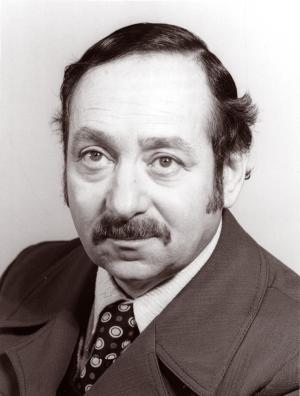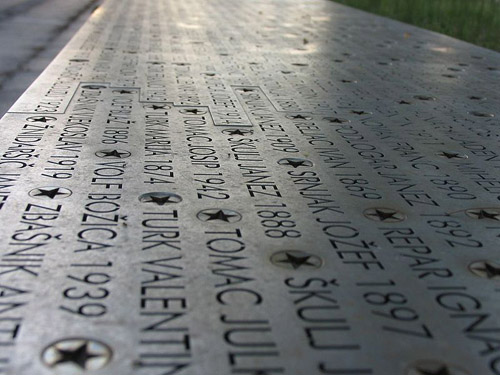This story is best to be categorized as creepy. There is one other story I came across which is creepier ,about an allied Army unit stationed in neutral Switzerland, where a soldier, Private Reginald, had complete gone insane in and kidnapped and ate several children. But I could not find any evidence if this actually happened or if it was just a ghost story told by some grandfather.
However the Chichijima incident did really happen and it does include cannibalism. One of the survivors, is George H.W. Bush , the 41st President of the USA.In fact he was only 1 of the 2 survivors

The Chichijima incident occurred in late 1944, when Japanese soldiers killed and consumed five American airmen on Chichi Jima, in the Bonin Islands.

George H. W. Bush, then a 20-year-old pilot, was among nine airmen who escaped from their planes after being shot down during bombing raids on Chichi Jima, a tiny island 700 miles (1,100 km) south of Tokyo, in September 1944. Bush was the only one to evade capture by the Japanese. After the war it was discovered that the captured airmen had been beaten and tortured before being executed. The airmen were beheaded on the orders of Lt Gen. Yoshio Tachibana.
American authorities claimed that Japanese officers then ate parts of the bodies of four of the men.
Lt. George Bush was a 20-year-old pilot when in the waning days of the war (September 1944) his Avenger airplane was shot down by Japanese forces.
In a decision which almost certainly saved his life, Bush ditched his burning plane further from the island than other crews. Retired squadron mate Charlie Bynum recalls:
“We saw him in the water. And we saw the Japanese boats coming out from land to pick him up. They had guns on them”
Bush managed to scramble onto a life raft while American planes launched a hail of fire at Japanese boats which had set out to capture the downed airman. The Americans drove back the Japanese boats and Bush, who was vomiting and bleeding from a head wound (his head struck the tail of the airplane as he exited the aircraft), was rescued from the waters by a US submarine (the USS Finback).

Details of Bush’s crash and rescue have long been known to Americans – he was awarded the Distinguished Flying Cross for his actions. What was not known, was that Bush’s downed comrades made the mistake of swimming to the island’s shore where a fate worse than death awaited them.
It was originally believed that eight other men from the downed aircrafts had simply disappeared while trying to swim to the island’s shore. When details of their true demise were discovered during war crime trials in Guam, the files of the missing soldiers were sealed sparing their families further grief. It was found that those who had been captured on the island were tortured, beaten, and executed. Some were beheaded with swords while others were stabbed repeatedly with bayonets and sharpened bamboo stakes. Some were bludgeoned to death. After the brutal execution, the men were butchered by island surgeons, cooked, and eaten by battalions and senior Japanese officers. In at least one instance, it is believed that in order to keep the meat fresh, the victim was kept alive and extremities amputated one-by-one.
The names of the eight aviators executed are:
Navy Aviation Radioman Jimmy Dye, from Mount Ephraim, New Jersey
Navy Pilot Floyd Hall from Sedalia, Missouri
Navy Aviation Radioman Marve Mershon from Los Angeles, California
Marine Pilot Warren Earl Vaughn from Childress, Texas
Navy Aviation Radioman Dick Woellhof from Clay Center, Kansas
Aviation Gunners Grady York from Jacksonville, Florida
Navy Aviation Gunner Glenn Frazier from Athol, Kansas
Navy Pilot Warren Hindenlang of Foxboro, Massachusetts.
The pictures below are of Marvie Mershon and Warren E Vaughan, I believe.
The ninth aviator, Navy Pilot William L. Connell from Seattle, Washington was held as a Prisoner of War until the end of hostilities in September 1945..
This case was investigated in 1947 in a war crimes trial, and of 30 Japanese soldiers prosecuted, five (Maj. Matoba, Gen. Tachibana, Adm. Mori, Capt. Yoshii, and Dr. Teraki) were found guilty.Tachibana was sentenced to death, and hanged.n his book Flyboys: A True Story of Courage, James Bradley details several instances of cannibalism of World War II Allied prisoners by their Japanese captors.The author claims that this included not only ritual cannibalization of the livers of freshly killed prisoners, but also the cannibalization-for-sustenance of living prisoners over the course of several days, amputating limbs only as needed to keep the meat fresh.
Later interviews suggest George Bush Sr. was greatly troubled over his survival (he did not learn about the cannibalism until many years later). In 2004, the former President returned to Chichi Jima island with a film crew to recreate the harrowing rescue at Chichi Jima. He recalled that while on the submarine, he wondered why he had survived while others had perished on the island.

Donation
I am passionate about my site and I know you all like reading my blogs. I have been doing this at no cost and will continue to do so. All I ask is for a voluntary donation of $2, however if you are not in a position to do so I can fully understand, maybe next time then. Thank you. To donate click on the credit/debit card icon of the card you will use. If you want to donate more then $2 just add a higher number in the box left from the PayPal link. Many thanks.
$2.00

















































 said that there were four distinct camps at Rab and a place that prisoners darkly referred to as the fifth camp, a cemetery where the hundreds who died of cold, starvation or illness were buried.
said that there were four distinct camps at Rab and a place that prisoners darkly referred to as the fifth camp, a cemetery where the hundreds who died of cold, starvation or illness were buried.


































































You must be logged in to post a comment.